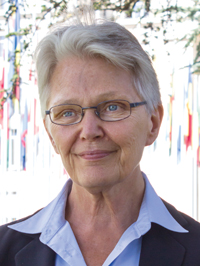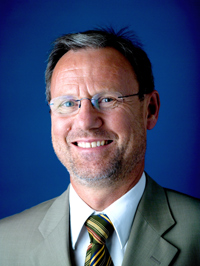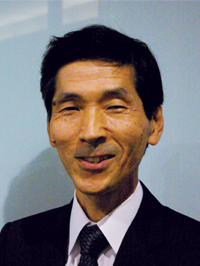|
|
|
 |
 |
 |
 |
 |
UNISDR Foreword – Resilient People, Resilient Planet Economic development and population growth have unleashed unprecedented change in the Earth’s atmosphere. Earth observation (EO) satellites have propelled not only our ability to investigate this change and to monitor the consequences in real-time but also to make issues around weather and climate more visible and understandable for the general public.
In an age when human activities threaten the planet with potentially irreversible negative changes, it is important that we have access to satellite imagery to improve our ability to understand and reduce the impact of the rise in disaster and climate risks over the coming decades. These will be decisive years in gauging the long-term sustainability of our current development models.
An understanding of key indicators around climate change, such as sea-level rise, the retreat of glaciers, permafrost and Arctic sea ice, and desertification, is enhanced by satellite imagery and is important to ensuring that decision-makers and public opinion alike are well-informed on the evolving nature of risk as we enter a year of opportunity for the global development agenda. 2015 will see the world reaching agreement on a post-2015 framework for disaster risk reduction but also of course, on a universal development agenda for the coming decades and a Climate Agreement. EO will play a key role in monitoring progress on implementation of these initiatives. |
 |
The real-time monitoring from space of natural hazards such as cyclones, floods, drought and volcanoes provides us with reliable and actionable information that is end-user friendly for planners, technical experts, business, countries, farmers, air traffic, and others; in other words for all of society. Such information must be understandable and provide the foundation for important decisions that determine how cities are planned, how communications and transport function, how farmers plant and harvest, the productivity of fisheries, public health planning and decision-making, and many other critical areas of development planning.
This informative volume provides good examples that illustrate why cooperation and collaboration between relevant stakeholders including end users will feature prominently in the post-2015 framework for disaster risk reduction which will be adopted at the 3rd UN World Conference on Disaster Risk Reduction in Sendai, Japan in March 2015.
Margareta Wahlström
Special Representative of the Secretary-General for Disaster Risk Reduction Head of the UN Office for Disaster Risk Reduction |
 |
 |
|
 |
|
 |
 |


|
 |
CEOS Message to WCDRR
The Committee on Earth Observation Satellites (CEOS) represents the civil Earth-observing programmes of more than 30 of the world’s leading space agencies. These agencies are collectively investing billions of dollars in space infrastructure with the capability to provide sophisticated, continuous, and sustained observations of the entire planet. The world is familiar with the application of these observations to the task of forecasting, tracking, and alerting society to extreme weather events like cyclones, and significant progress has been made by space agencies in facilitating access to a wide range of observations in response to a much wider range of disasters. However, the space agencies represented in CEOS have resolved that more could and should be done to realise the full potential of the application of satellite EO to disaster risk management, in particular by better supporting national and local decision-makers to implement disaster risk reduction and resilience measures, during all disaster risk management phases.
This report explores how satellite EO can contribute to the main challenges of disaster risk reduction, across a range of different countries and addressing varying capacity and infrastructure. It also highlights some of the main capabilities of satellite EO, their applications, and the challenges we face in converting information collected in space to knowledge of value to societal challenges, delivered in a timely way to users at all levels of government here on Earth.
|
 |
The report has been compiled in support of the 3rd United Nations World Conference on Disaster Risk Reduction (Sendai, Japan, March 2015), to assist the debates around how to better address the endemic challenges of risk reduction to ensure that future generations face fewer disasters and are better equipped to handle them. In combination with other resources (such as in-situ observations, model outputs, and socio-economic data), satellite EO is an absolutely essential tool in the development of information, providing evidence and supporting the science which underpins strategies for decision-making, and for monitoring our progress on all geographical scales as we explore new development paths aimed at sustainable management of the planet, confronting disaster risk reduction, climate change, and sustainable development in a unified manner.
We hope that this CEOS Report might serve as a valuable reference source for a variety of readers from all sectors of society, including those engaged in the Post-2015 framework for disaster risk reduction process and in the definition and execution of the main sustainable development goals tied to risk reduction, as well as decision-makers in political and socio-economic sectors. Volker Liebig
Director of Earth Observation Programmes
European Space Agency (ESA)
Shizuo Yamamoto
Vice President
Japan Aerospace Exploration Agency (JAXA)
CEOS Chair for 2015
|
 |
 |
|
 |
|
 |
|
 |
|
|
|
|